GOYA IN ARABIA (SACRED/CULTURE/BUSINESS/FUN)
YOU EXPECT ONE THING YET SEE ANOTHER
We spent the last days of 2023 and the first ones of 2024 in Riyadh, Jeddah, Macca, and Madinah. This is how I prefer to start a new year. I proceed with my life unlike the rest of the world engaging in a compulsory break, even getting a chance to do some “internal accounting” by visiting sacred places as one year ends and a new one begins…
This time we wanted to watch the Super Cup game in Riyadh first. After some comedy, I ended up concluding we don’t live in this world. Anyway, we’ll get to that after a bit.
However, I must tell this Arab joke that explains it all to me:
Once in New York, an Arab driving in Manhattan wants to park his car; to be sure he asks the policeman nearby, “Hey officer can I bark in here?” The officer is surprised and replies, “It is a free country, you can do whatever you want.”
(The letter P doesn’t exist in Arabic. They use P instead. So, he says “bark” but means “park.”)
You’ll find all about our factory and marketplace GOYA visits, the Saudi cultural change, our culinary experiences, observations, and Umrah impressions in my article…
We were in Macca for an Umrah visit with my family as the new year began. I also had a few friends with me. I had made many Hajj and Umrah visits before. It feels great to welcome the new year on holy lands and in prayer. Some call it “starting the new year all cleansed” based on the Western religious approach but being a Muslim in the real sense requires living all cleansed at all moments. This is what five times of daily prayer ensures. May all Muslims be blessed with this experience!
The role of our Ülker operations in Saudi Arabia and other Gulf countries and the distribution network and factories we built there have been so substantially influential on my training as a businessperson. Currently, we are at the top of the biscuit market with our brands Ülker and McVitie’s. We have two factories in Riyadh and Jeddah. We wrestle for the top with our brands Ülker and Godiva in the chocolate market. Every year, I pay GOYA visits to our factories and explore the market for I believe this business will soon grow with significant interest. We had set out to see the Super Cup game between Fenerbahçe and Galatasaray, which was the hot topic for a while, in Riyadh -that was our excuse. Well, we made it to the stadium, waited for an hour, and ended up not watching the game. But, anyway. May it be for the best. Actually, when we arrived in Riyadh, everything was great. On our way, all the way to the airport, we saw many ads of the game all around the city. Some European countries have already started playing such final games here, some have even signed multiple-year contracts.

I prefer Saudi Airlines for this route because Turkish Airlines flights are usually scheduled for quite late and challenging times. Saudi Airlines had already offered us exclusive tickets for the game as the Consulate also did. In short, we were going to be hosted exclusively, yet apparently, it was not meant to be. However, we didn’t feel the tension experienced in Türkiye there, away from all discussion. It feels to me that it was just us mumbling to ourselves in this incident, and nobody else understood anything. Well, I am glad the game was not the main reason we went there.
Another reason I wanted to visit Saudi Arabia was to observe the efforts toward Crown Prince Muhammad bin Salman’s modernization project, ‘Vision 2030.’ Judging by what I have read about it, the 2030 vision is, first of all, a governance strategy that involves investing in technology. The demographic structure develops in the interest of women and the youth. It is as important to employ this new and dynamic generation as it is to meet their individual needs. The project would enable the educated, fresh, and now cosmopolitan Saudi youth to access executive positions in new projects and be able to experience and offer the Kingdom’s social and economic choices.
Saudi Arabia is the home of Islam’s most significant sacred places. Islam is the cement holding together the tribes, which are the country’s dominant social formation, ensuring their unity. Moreover, Islam is a way that boosts the Kingdom’s influence in foreign policy and enables it to reach wide Muslim masses.
Another aim of the Kingdom is to reduce oil dependence by diversifying the economy. This approach creates new employment areas in various industries, ensuring the inclusion of Saudi women and the youth into the national economy through employment. Today, Arabia is a popular vacation and tourism destination. The Kingdom is more integrated and in interaction with global society. They aim to open the historically significant areas across their lands to tourism, not settling with Hajj tourism only. They now give multiple-entry digital visas. Earlier, it was not only difficult to secure a visa but also you could only visit the city you specified in your application. There were travel limitations. According to the latest census of 2022 (I have to closely follow some demographic information), the country has 32 million 175 thousand residents. This is 34 percent higher than the previous census of 2010. 18 million 792 thousand (58.4%) of this population is Saudi, with the rest being non-Saudi. The male population rate is 61.2%, and the female population is 38.8% because most foreign workers are males.
51% of the population is younger than 30 years of age. The median age of Saudis is 22, and of non-Saudis is 34. Riyadh is the most crowded city with 8 million 571 thousand people. Women’s fertility rate is 2.1 children per woman. This rate stands at 2.8 in Saudis. The population is highly diverse. 2 million 116 thousand of the non-Saudi population is from Bangladesh, followed by four different groups with a population of over 1 million: 1 million 884 thousand Indians, 1 million 814 thousand Pakistanis, 1 million 803 thousand Yemenis, and 1 million 471 thousand Egyptians. The rate of Philippine and Syrian populations varies between 1 million and 500 thousand, followed by Nepalis, Jordanians, Afghanis, Ethiopians, Kenyans, Ugandans, etc., with populations ranging between 200 thousand and 50 thousand. The population of those from Türkiye is 25 thousand 485. As you can see, “diversity and inclusion” is the main topic here (2).
When I take GOYA trips, I get together with the teams, meaning the people who do the job and their executives. I aim to see their best performance and ensure that they pursue the standards we set as a result of our assessments of it. There, Friday is the weekend -the factory is closed, and there is no production but sales operations continue. Thus, we went on GOYA with our team to Riyadh’s significant shops and grocery stores on December 29, Friday. I was delighted to witness the consumer interest in our brands Ülker, Godiva, and McVitie’s, the way our products were displayed on the shelves, and customers racing with each other to grab our products while we were there.
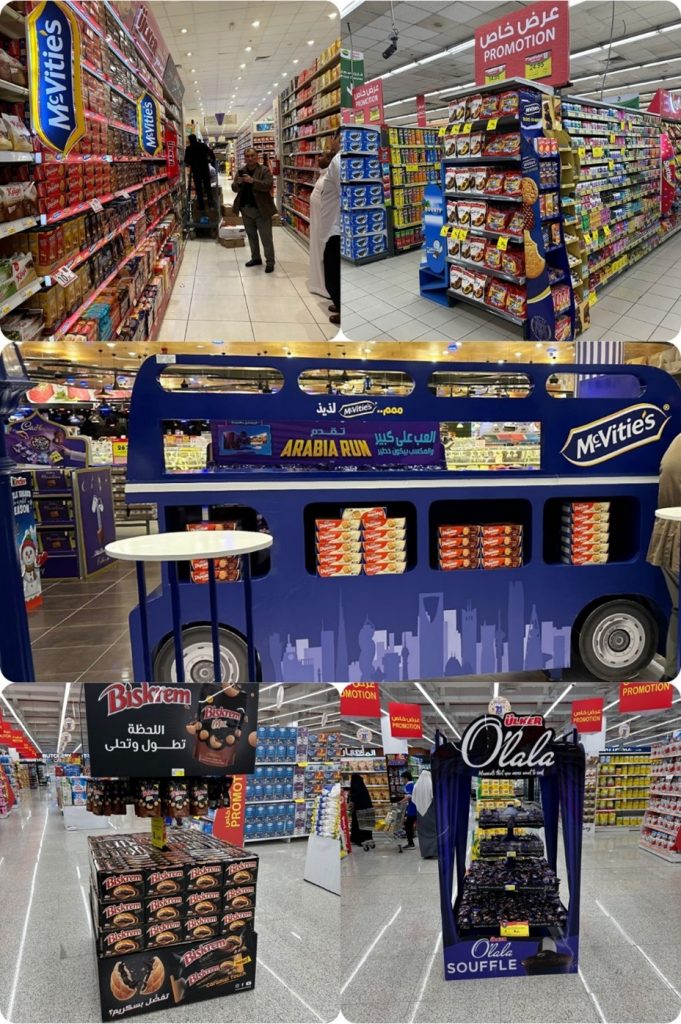
After the Friday prayer, we continued our GOYA in the markets. We visited Danube, Tamimi, Rawfid, Othaim, and AlSadhan, which are big chain stores in Riyadh. There are a total of 32 thousand points. We are present in over 18 thousand, including the sales points to which we directly deliver our products with our own vehicles. In our GOYA visits to the stores, we observed both the power of our brands and the in-store positions and activities of the other brands. I saw some unique stalls and shelf applications that I had never seen in Türkiye before. I collected some samples, packed them with me, and brought them to my homeland.
We met some journalists from Türkiye at our GODIVA chocolate store on the famous Takhassousi Avenue in the afternoon, who had come for the soccer game. It was their GOYA visit to us this time. Later, we went to a chain store GOYA visit with our journalist friends. They were happy to see such an impressive interest in a Turkish company in another country.

On December 30, Saturday, that is, the first day of the week, we took a GOYA trip to our factory in Riyadh. All operational and quality-related procedures must be carried out in four languages (English, Arabic, Urdu, and Filipino) due to the populational diversity in our Saudi factories. Even other announcements are made in all these four languages. Following the factory tour, presentation session, and consultations, we held a “Product Evaluation” session. This is a test, where products ready to be dispatched and randomly picked from the warehouse are checked and evaluated for taste, inner packaging, and outer packaging, ensuring our products are delivered to our customers and consumers at their best.
Later, we set out for the airport in Jeddah to go to Macca. As you may know, the term mîqât refers to the point of entering into the state of ihram for those coming to visit Macca from other regions and countries. We had donned our ihrams just in case before we left our hotel because this involves more effort and higher respect. We were going to pass by mîqâth, where we were supposed to enter the ihram state, during our plane ride. In two hours we arrived in Jeddah, and another hour later we were in Macca. We immediately did our Umrah, which refers to Muslims visiting the Ka’bah out of the Hajj season. Umrah means ‘visit.’ Islamic law defines it as wearing the ihram, circumambulating the Ka’bah (Tawaf), doing Sa’i of Safa and Marwa, and finally shaving a little regardless of the time unlike in Hajj.
Ihram: Abstaining from some behaviors that are normally permissible (halal). It also refers to the two-piece clothing worn by men for Umrah.
Miqat: The boundaries that mark the end of a non-Ihram state. Different areas are designated for visitors coming from different directions (Zülhuleyfe, Cuhfe, Zatı Irk, Karn, and Yelemlem).
Tawaf: Walking a full circle around the Ka’bah seven times while praying and asking for forgiveness and favor in the world and the afterlife.
Sa’i: Seven trips between the Safa and Marwa hills located in the east of the masjid where the Ka’bah is, more precisely four times in one direction and three times in the other. Sa’i is the replication of Hacer running hurriedly and desperately between the two hills for Ismail, the son of our Prophet’s great-grandfather and Prophet Ibrahim from our Mother Hacer, the bondswoman (slave woman) whom he married with the permission of our Mother Sare since they could not have any children. This Hajj service has been repeated in all divine religions. Think about it… Allah wanted to ensure that all believers experience the suffering and worries of this slave woman, a mother, for her child, at least once in their lives as they worshipped. (No comment)
Taqsîr: Trimming of hair for leaving the state of Ihram.
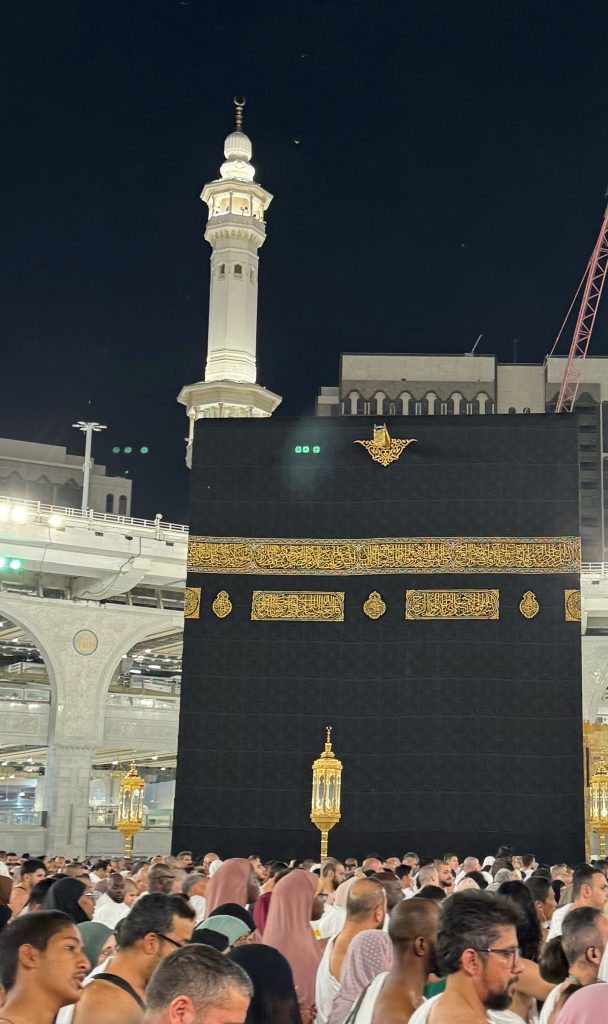
We spent Sunday, December 31, resting, praying, and performing the salaat in our hotel. Of course, I did not miss the chance to do a GOYA visit to a store in the arcade at the hotel. A stall caught my attention at the entrance. There was the image of a “rock” from the Neolithic Age on it. It was an ad for the Hima Rock Art, which was granted the status of a Cultural Heritage Site by UNESCO in 2021. You can also view other tourist centers across Saudi Arabia using the QR code. As you see, these are developments associated with the Kingdom’s 2030 vision. https://drive.google.com/file/d/1yVzE35ZXH-vQBMM9t6xMqmrwHmuvB-XE/view).
On January 1, there is no New Year holiday in Saudi Arabia. So I returned to Jeddah and started work. This time our GOYA visit was to the Jeddah factory, which has twice the production capacity of our Riyadh factory. We employ 200 people in the Riyadh factory and 300 people in Jeddah, with 150 female workers. Of course, we took a detailed tour around the factory after our product evaluation session in Jeddah too. We have four factories in the MENAI (Middle East, North Africa, India) region. Two experienced colleagues from Türkiye run the Supply Chain and Sales operations. Marketing is entrusted to an Egyptian colleague, and the head of the entire region is an Indian colleague. This team is very successful. We are a global company!
I should also mention something I witnessed for the first time ever: The Maintenance Team in the Jeddah factory manufactures machine spare parts themselves using a “3D Printer” at a cheaper price and in a shorter time. I was highly impressed. Once again, thanks to the entire team for this!
We did some GOYA at a joint investment by a Syrian and a Saudi family in the afternoon. Seeing and knowing more would do us no harm now, would it? Our national flag welcomed us as we entered the factory.
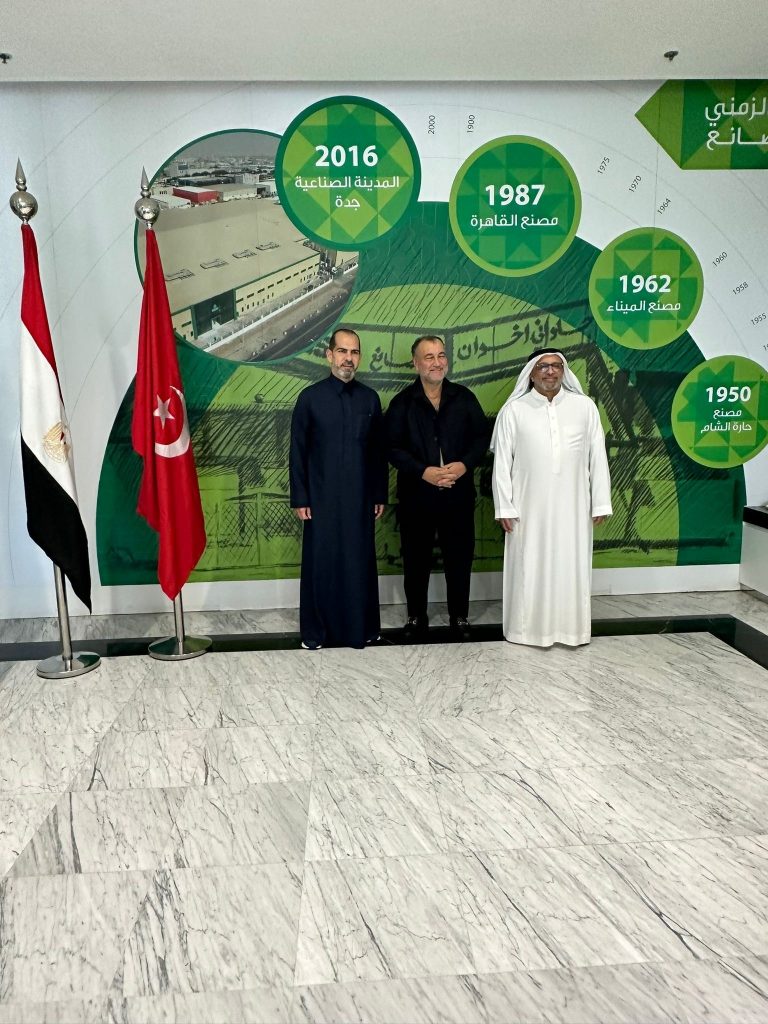
Our next stop was the business center where pladis’ sales, marketing, and administrative offices are located. We met colleagues from the Marketing department, talked about some challenges, and I answered their questions.
We attended a dinner in Macca in the evening, a treat from our Saudi General Manager. We were overwhelmed by the generosity and hospitality. But, of course, the excess food was shared with those in need.
On Tuesday, January 2, we set out early and took the high-speed train from Macca to Madinah. The train station and the waiting areas were built in quite a modern style. The desert looks so different in the winter season, with thin but green grass shooting from the ground like the peach fuzz on a baby’s skin, and camels spreading themselves on these pasture-like fields. Some people live in tents in this season. The dessert is broiling hot and deadly in the summer. In conclusion, each season has a unique feeling. Maybe we’ll also talk about some of my dessert adventures at some point.
Non-Muslims are prohibited by Islamic law to set foot in Macca or Madinah, they are not allowed to enter. We came across foreign tourist groups at the train station in Madinah, who I believe were from other religions. They were visiting other parts of Saudi Arabia as part of the 2023 vision, staying outside the Harem region, and engaging in touristic activities. The high-speed train which opened in 2018 arrived in Madinah in a little longer than two hours, going up to a maximum of 300 km in speed. I enjoyed this comfort between Tokyo and Kyoto 40 years ago. After we checked into our hotel, we went to Masjid al Nabawi to do our worship. Masjid al Nabawi, or the Prophet’s Mosque, is the masjid built by our Prophet and his companions in Madinah after the Hegira. Our Prophet’s adobe house is adjacent to the masjid and his grave is in that house. Today, the Masjid has been extended to include the entire Old Madinah town. More than a million people can perform the salaat together at once as a big community. For the masjid in Macca, this number exceeds two million. Our Prophet’s house, that is, his grave, is inside the masjid, in the left front corner of the qiblah. “Nabawi” means “belonging to the Prophet” in Arabic, and the phrase “Masjid al Nabawî” means “The Prophet’s Masjid.”
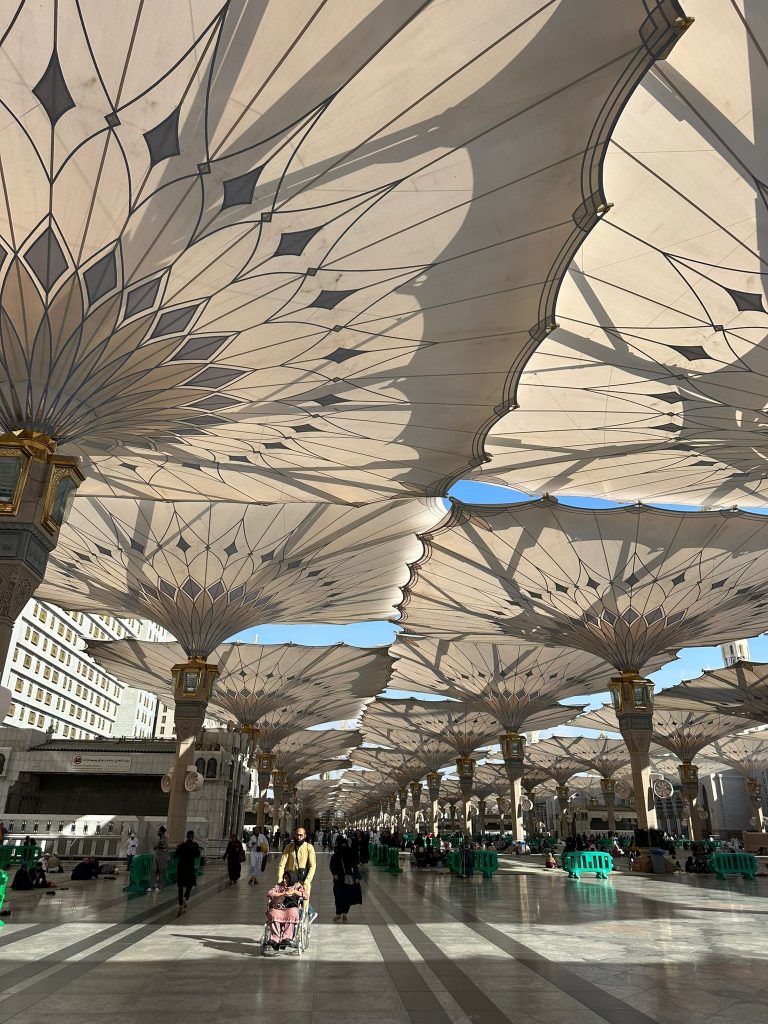
When I visited the Macca and Madinah masjids in the ‘70s for the first time, some parts were covered in sand like in our Prophet’s time. Today, even the outdoors are air-conditioned and all floors are covered with carpets. There is continuous cleaning and disinfection, with cold water and zam-zam water offered at all times. There are accessible, adequate, clean, and modern restrooms. However, back in 622 BC, when our Prophet arrived in Madinah, the people had paid homage to him, accepting him as their chief. He, on the other hand, settled in the city as a guest, building the masjid and his home eventually. The ground was made of soil/sand, and the walls were built using adobe. Only a part of the masjid was covered using date tree branches and offered some shade.
Let’s imagine… He conquered his birth town, Macca, in 630, within the decade he lived in Madinah, from the Madinah city-state he established with no resistance at all. During the 12 years he lived in Macca, the number of Muslims was only a few hundred and he had to migrate to Madinah as his fellow townsmen intended to end his life. But then, the entire Hijaz was under His rule and almost half a million people had become Muslims. He never changed his lifestyle, house, or masjid. After his passing in 632, his close companions and son-in-law extended the Islamic territory to cover North Africa, the entire Middle East, a significant part of Anatolia, and Western Asia as the “Rightly Guided Khalifas” until 661, with barely any changes in their lifestyle or where they lived.
In His Book, in Surah Anbiya verse 107, Allah says: We have sent you forth as nothing but mercy for the whole world. Our Prophet had apostolized Islam, sometimes at the risk of his life and sometimes by fighting battles. But how was Allah’s mercy revealed? Here are a few figures for you: In his prophethood of 22 years, almost half a million people became Muslims. The Hejaz territory exceeded 1.2 million square kilometers on its own. During his prophethood, a thousand Muslims and five hundred non-Muslims died in combat.
It seems the memory of the meal we had in a big tray, sitting on the floor at a highly authentic restaurant in Madinah in the afternoon will stick with all of us for a long time.
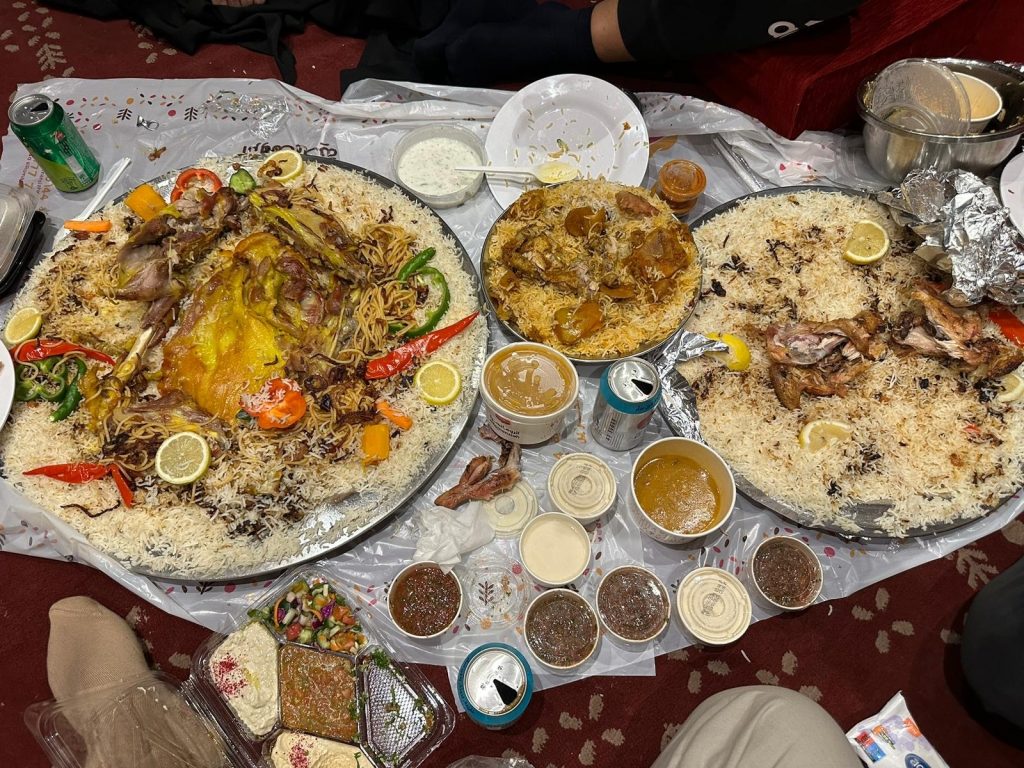
Later, we returned to Masjid al Nabawi and continued our prayers. January 3, the sixth day of our trip, was our last day in these holy areas. It was not even midday and a surprise event was in store for us. Frankly, we had an appointment at 11 a.m. but we didn’t have any clue about our destination. It turns out we were going to the Islamic Civilization and the Prophet’s Life History Museum and Exhibition, located right at the qiblah direction of Masjid al Nabawi. As part of the Vision 2030 I mentioned earlier, it was an entirely digital museum featuring 3D models as well. As you walk around the museum, you get to learn many things about the evolution of the Islamic civilization, as well as the life story, genealogy, and relatives of our Prophet. Examining the 1/1000 model of Madinah at our Prophet’s time, and his house makes a particularly unique impact (https://salamfairs.com.sa/ar).
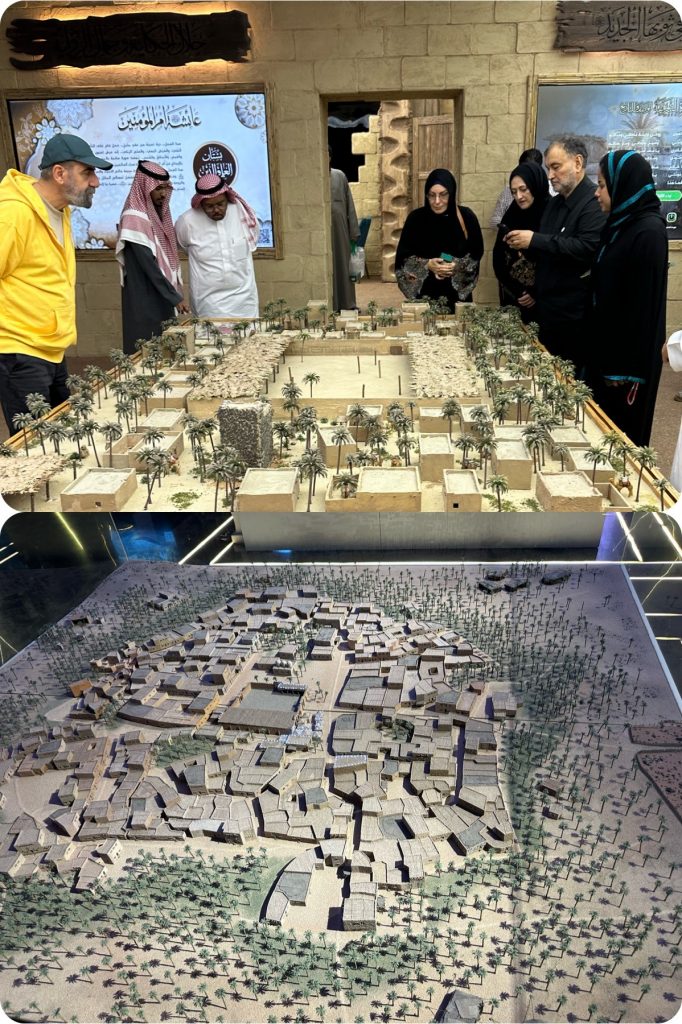
His bed and pillow, made of date fibers, and his one-room house with no furniture, the fact that his grave in his house, where he was buried after his death, was only a heap of soil one handbreadth higher from the ground, with no structures, such as a headstone, tomb, or wall… Doesn’t all this tell us quite a lot today?
The two short animated movies we watched at the museum featured very interesting and realistic information about our Prophet’s environment. I am sharing the links for those who are interested.

After the noon prayer, we saw another recently opened exhibition about how the Masjid al Nabawi extended in territory over the years. This was a very interesting one, too. I highly recommend both exhibitions to those planning to visit Madinah.

Thanks to the digital appointment application launched after the COVID-19 pandemic, I got to visit our Prophet’s grave in Madinah and do a two-Rakat prayer in the original masjid, which He called “the garden of Eden.”
Our final stop was yet another tourist attraction driven by the new vision. We visited a date orchard. It was a highly touristic, a little outdated, but authentic experience. They greeted us with a shower of rose petals. They intended to give an identity to date orchards with a few stories involving our Prophet. They told those stories and offered us a date- and cardamom-flavored Arabic coffee. Later, they took us to a date stand and introduced some date varieties. If you ask me, this is an optional activity. You could try it or not, depending on how authentic an experience you wish to have.
Thus, we have arrived at the end of the six whole days we spent in the holy land. With GOYA visits, prayers, and various attractions, six days just went by full of action and great happiness. I hope you will have the chance to experience this too. It was a bliss for us.
I also wish to share a few photos with you featuring people from Macca and Madinah to show how Muslims from 72 nations come together in peace, respect, and happiness, creating unique and wonderful human landscapes…
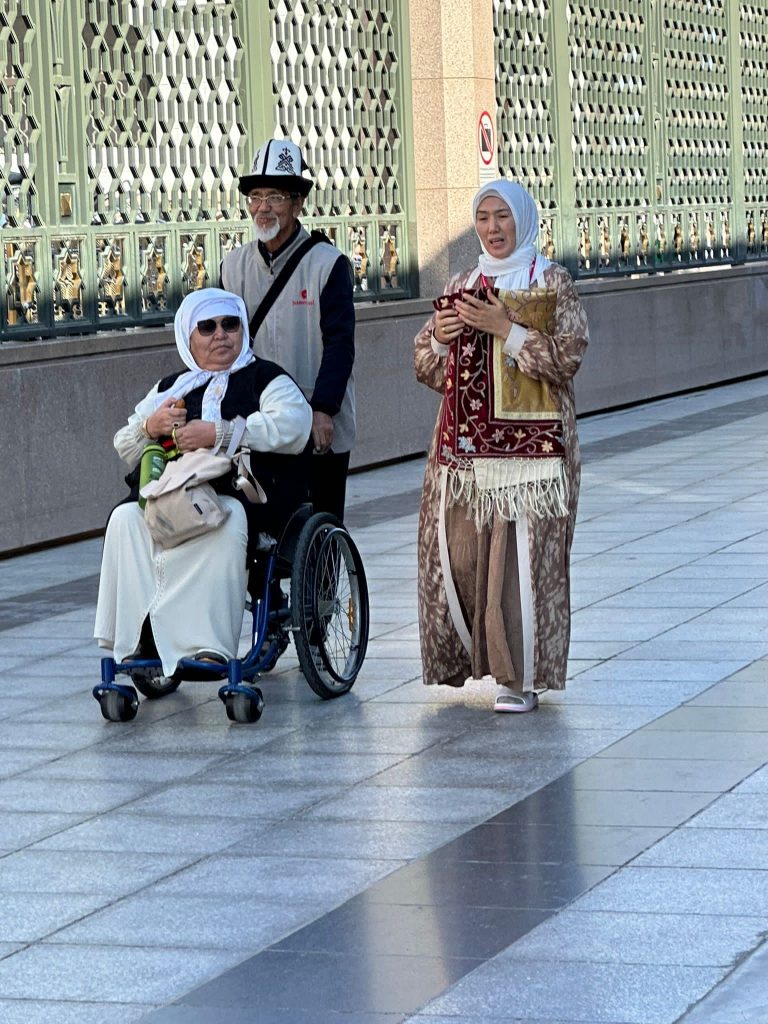

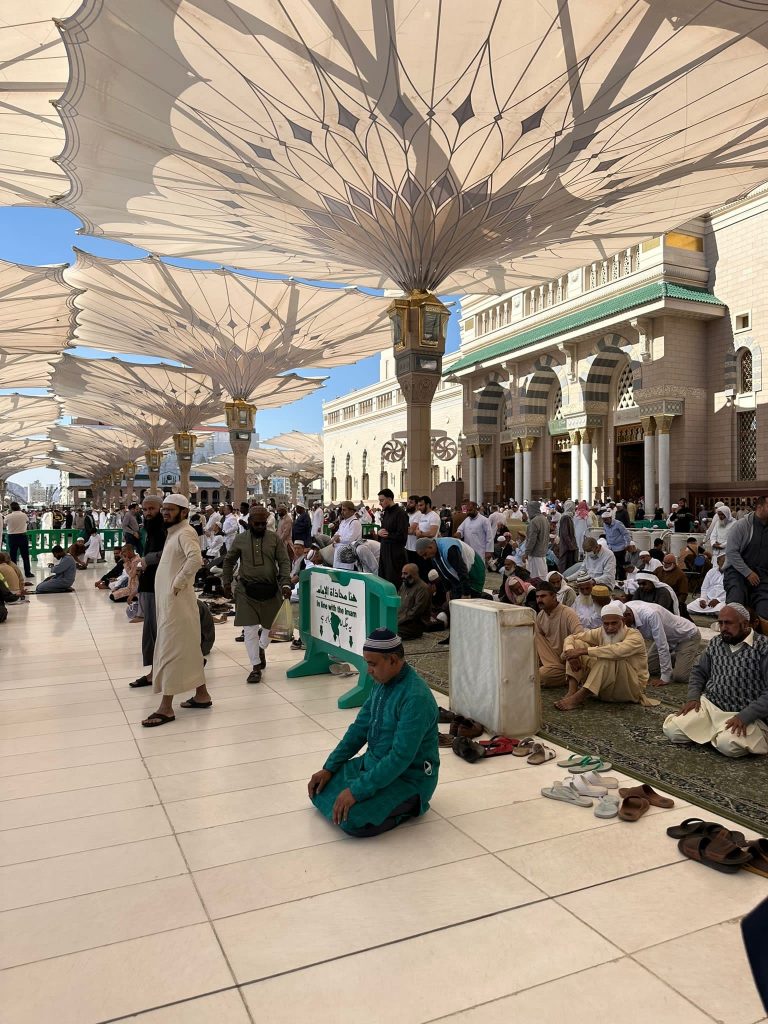
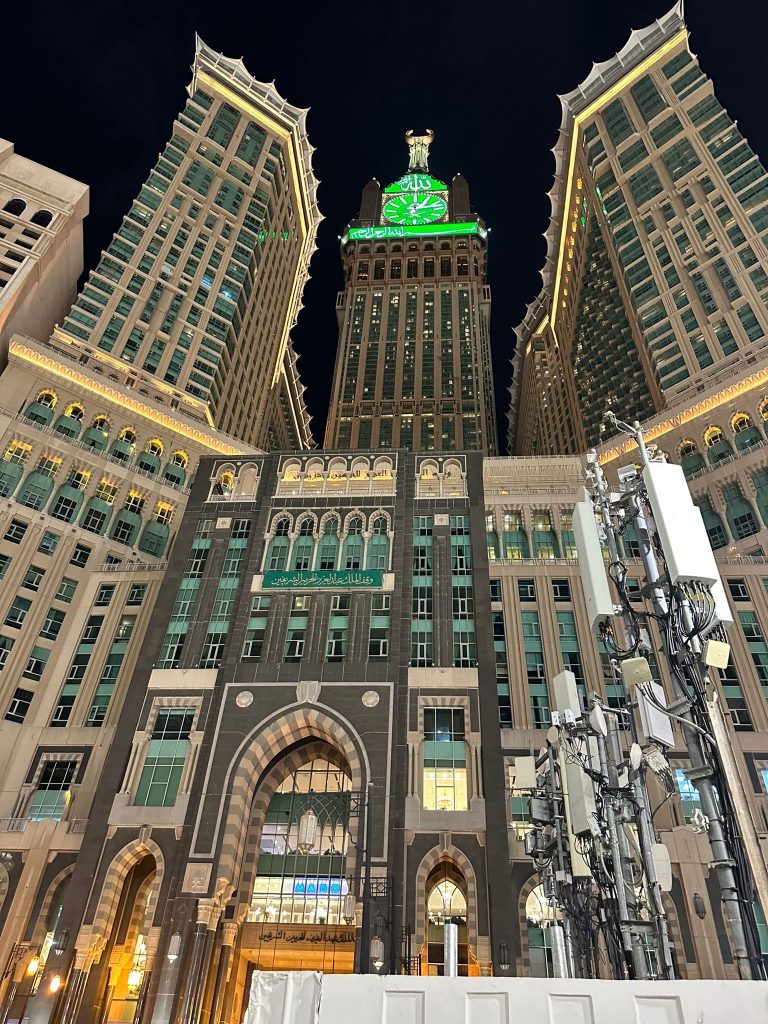
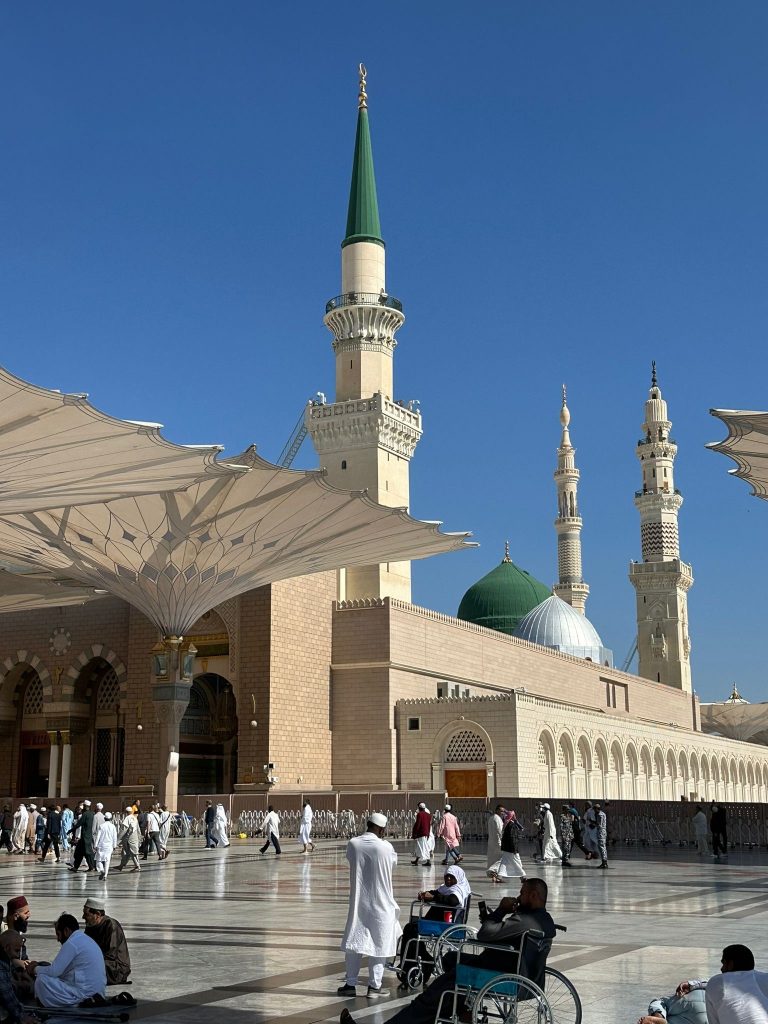
Note: This open-source article does not require copyright and can be quoted by citing the author.

